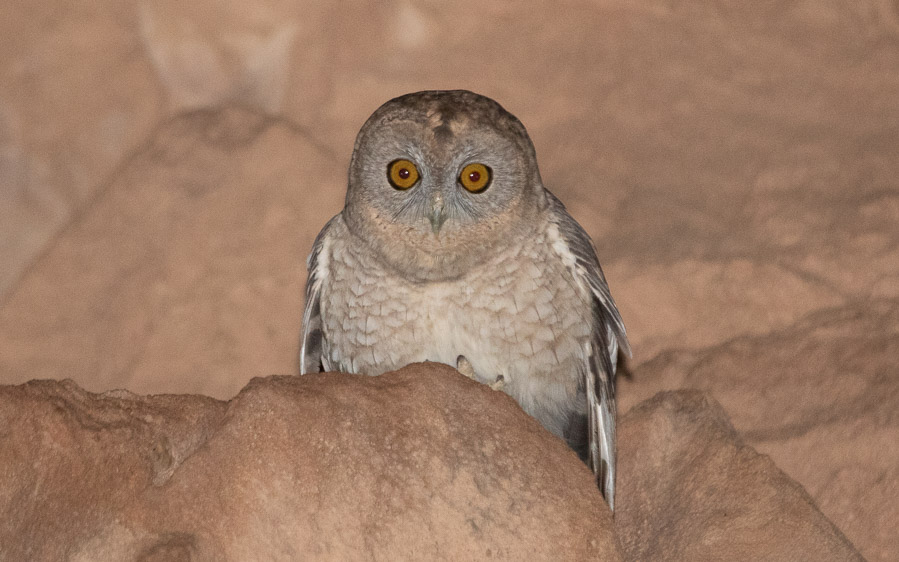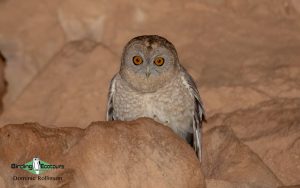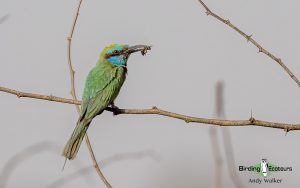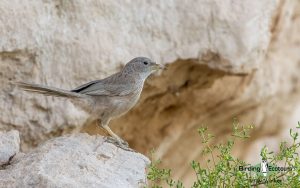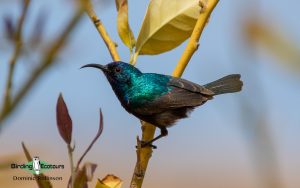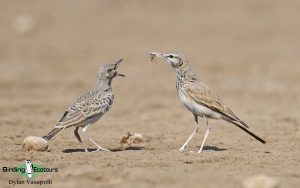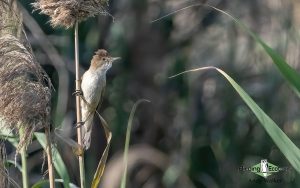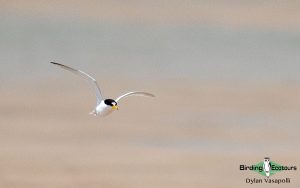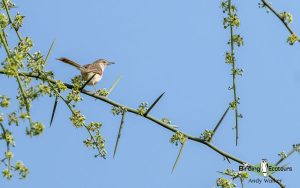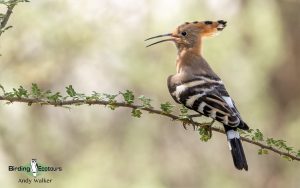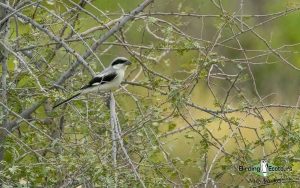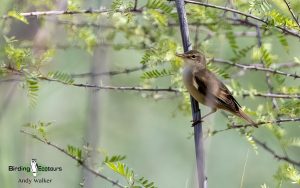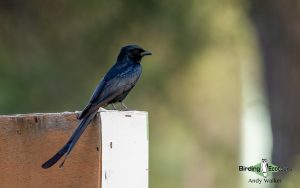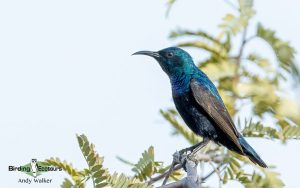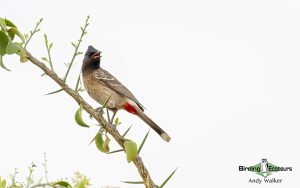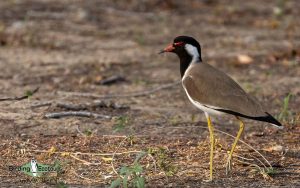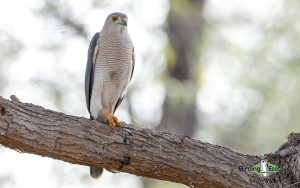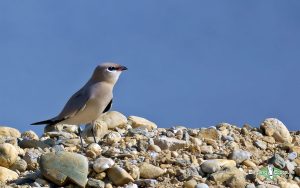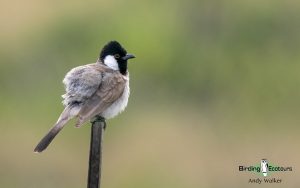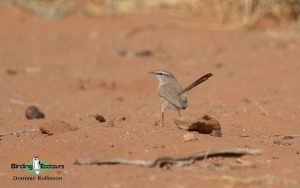Oman Birding Tours
Our Oman birding tours, offer a unique birding experience, with an exciting avian diversity comprised of Arabian Peninsula endemics, Asian and African species, and many wintering migrants. With warm hospitality, an excellent infrastructure, comfortable accommodations, flavorful cuisine, and established birding sites, Oman is one of the best birdwatching destinations on the Arabian Peninsula and a must-visit for global birders.
Situated on the southeastern edge of the Arabian Peninsula, Oman borders the United Arab Emirates to the northwest, Saudi Arabia to the west, Yemen to the southwest, and is approximately 35 miles (56 kilometers) across the Strait of Hormuz from Iran. Oman spans approximately 120,000 square miles (310,000 square kilometers), making it slightly smaller than Poland or the US state of New Mexico. Its coastline along the Arabian Sea and the Gulf of Oman is vast, stretching over 2,000 miles (3,200 kilometers). About 80% of the population resides along the coast, where most of the country’s major cities are located, including the capital Muscat, as well as Seeb and Salalah.
Oman’s landscapes are diverse and stunning, making it a captivating country to explore. The country’s interior is dominated by stony plains and deserts, with seemingly endless stretches of shifting, golden sand dunes, and there are large mountain ranges in the north and south. In the arid north, the towering Al Hajar Mountains rise dramatically just 50 miles (80 kilometers) west of Muscat, known for their deep canyons, vast plateaus, and terraced valleys. In contrast the Dhofar Mountains in the south transform into a lush, green oasis during the Khareef monsoon season, between June and September. Beside bustling cities, Oman’s long coastline hosts picturesque beaches, staggering cliffs, and tidal lagoons which teem with waterbirds. Oman can experience very high temperatures in summer, often exceeding 100°F (38°C) and reaching up to 120°F (49°C) in the deserts. As such, the best time to visit is between October and April, when the weather is drier and temperatures are more pleasant, ranging from 65°F to 85°F (18°C to 29°C).
Read More About Oman
Oman has a rich maritime heritage, shaped by its location at the crossroads of trade routes, and is still ruled by a Sultan, a traditional monarch overseeing its peaceful development. Oman is arguably the most popular destination on the Arabian Peninsula, and visitors are drawn to Oman’s ancient forts, bustling souks (Arabian markets) selling traditional crafts, jewelry, and spices, as well as its striking landscapes and unique wildlife. With a reputation for safety, welcoming people, and well-maintained infrastructure, travel in Oman is both easy and comfortable. Accommodations range from quaint guesthouses in traditional villages, to luxury resorts by the sea, and the cuisine, influenced by both Arabic and Indian flavors, enhances the cultural experience.
Following International Ornithological Congress (IOC) taxonomy, v14.2 (September 2024), Oman’s bird list stands at 558. Twelve are endemic to the Arabian Peninsula, including the highly desired Arabian Golden-winged Grosbeak and Desert Owl, along with Arabian Partridge, Arabian Scops Owl, Arabian Eagle-Owl, Arabian Green Bee-eater, Arabian Lark, Arabian Babbler, Tristram’s Starling, Arabian Wheatear, Arabian Sunbird, and Yemen Serin. Several exciting species nearly restricted to the Arabian Peninsula can also be found, such as the enigmatic Omani Owl, Forbes-Watson’s Swift, and Grey Hypocolius, as well as Sand Partridge, White-spectacled Bulbul, Graceful Prinia, Arabian Warbler, and Palestine Sunbird. Desirable waterbirds, such as the IUCN threatened Socotra Cormorant, and Crab-plover may also be seen on our Oman birding tours. Beyond its birdlife, Oman is home to many other unique species, with 14% of reptiles and 11% of plants endemic to Oman, including the Omani Pomegranate tree. The mammals are special too, and Oman holds large populations of rare and threated (IUCN) Arabian Gazelle and Arabian Leopard, as well as the reintroduced Arabian Oryx, which was once extinct in the wild.
Our 12-day Oman birding tour provides the opportunity to see many Arabian bird specials, including all 12 Arabian Peninsula endemics found in Oman (listed above), along with a fascinating mix of African and Asian species. We start in the north, by familiarizing ourselves with common Arabian birds in the wetlands and open landscapes around Muscat, such as the beautiful Arabian Green Bee-eater, as well as Arabian Babbler and Egyptian Nightjar. Then, we explore the breathtaking mountains of Jebel Akhdar Nature Reserve, searching for the elusive Omani Owl, Sand Partridge, and wintering migrants like Eversmann’s Redstart, and Menetries’s Warbler. The second part of the tour is based in Salalah in the south, exploring the Dhofar Mountains, Jebel Samhan Nature Reserve and the Wadi Darbat, all recognized as important bird areas (IBAs) due to their endemic bird and mammal species. Top targets here include Arabian Partridge, Arabian Eagle-Owl, Arabian Sunbird, and Arabian Golden-winged Grosbeak. We will visit the coastal wetland IBAs at Khawr Rouri and Khawr Hassanare for migratory shorebirds, and journey into the golden deserts of Oman’s interior for sandgrouse and wheatear species, plus the monotypic Grey Hypocolius, and many wintering migrants. The tour concludes with an exciting pelagic boat trip to seek rare seabirds such as Saunders’s Tern, Persian Shearwater, and Jouanin’s Petrel, along with marine mammals such as Sperm Whale and Spinner Dolphin.
Birding Ecotours Oman birding tours promise not just unforgettable wildlife encounters, but an authentic experience of Oman’s cultural and natural beauty, which we look forward to sharing with you. Oman is well connected to the UAE, allowing for combined tours to the region, and we can arrange a short birding extension to the UAE after our Oman tours for those interested.
Download Oman Itineraries
Oman Birding Tour: Endemic Birds of the Arabian Peninsula November 2025/2026
